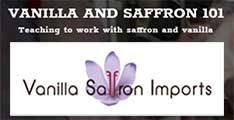By Priscilla Ng
How did you become a chef? “In 1998, I enlisted in the Korean army, where I stayed for 26 months. The cooks at the military base I served at were on holiday for two weeks and I was asked to take over the catering. That was my first time grabbing a knife and cooking, and it was so much fun it didn’t seem like work.
“Soon after I had completed my military service, the officer asked me to take over the job, because he thought I was better than the other cooks. I stayed there for 10 months, and I realised that cooking was something I was good at. I was 21 at the time and, before that, I never had a dream or any idea of what I wanted to do as a career.”
Describe your own cuisine and style. “A re-creation of traditional Korean food – the ‘new Korean cuisine’. I would describe my style as ‘refined’.”
Secret Seoul: the South Korean capital’s hidden gems that only locals know
What inspires you? “Daily life and my surroundings. Whenever I am developing a menu, I focus on the ingredients, do research about them, study what other chefs make, and I delve into the idea. I am inspired when I focus on the different elements of a particular dish and how they come together.
“If I had to name one particular influence, it would be one-Michelin-star restaurant Zuberoa, in the Basque Country, Spain. They make traditional Basque-style cuisine. I was so inspired there that I was able to create the concept of the ‘new Korean cuisine’ within 10 minutes.”
Zuberoa restaurant in Guipuzcoa, in Spain’s Basque Country has been a big influence on Yim Jung-sik’s cooking
How long does it take from conceiving a dish to serving it in your restaurants? “The way I develop the menu depends slightly on the season. During summer, I’m preparing for the autumn menu, which is the season for harvesting mushrooms. We plan our dishes around this ingredient.
“The head chef and I at Jungsik Seoul brainstorm and try our ideas out. If something is not good, or doesn’t come out the way we want it to, we have no choice but to dispose of it. We try our ideas out again and again until we achieve our original concept. We brainstorm everything from the presentation of the dish, to the texture of the ingredients.”
Why Michelin-star chef Yim Jung-sik has fallen for North Korean food
What’s your favourite comfort food? “There are two very popular dishes in Seoul at the moment and they are what I would pick for comfort food: gomtang – Korean beef bone soup and rice served with kimchi; and North Korean cold noodles – Pyongyang naengmyun.”
What countries do you like to visit for their food? “In Asia, I would pick Hong Kong for sure, as well as Japan. I love Spanish food, too. Whenever I’m travelling, I try local dishes.”
How did New York take to your cuisine? “Ten years ago, when I opened Jungsik New York, I placed a lot of emphasis on fusion food, and how I could incorporate other cultures into my culinary work. But now, it’s all about emphasising your own culture and flavours. People have started to appreciate the traditional and authentic ways of making food, which is a completely different mindset. A lot of countries in the West are now curious about Asian cuisine and styles and there are now Korean, Japanese and Taiwanese food crazes in New York.”
Beyond barbecue: from fine dining to market stalls, Seoul has all flavours covered
What are your thoughts on incorporating culinary styles from around the world? “When I opened Jungsik Seoul, I tried hard to incorporate culinary techniques from different cultures, to appeal to the Korean market. I wasn’t experienced back then, and I didn’t have enough creative ideas. I copied and took inspiration from techniques and culinary styles that I encountered, and tried to put my own spin onto them.
Yim Jung-sik describes his cuisine as refined. Picture: K.Y. Cheng
Now there are a lot of customers from different parts of the world – not only from Korea. They come to my restaurant with hopes of trying what Korea tastes like. Our customers in New York also tell me that I should focus more on the authentic Korean culinary style, and avoid fusion food. However, I try to modernise the kimbap [Korean seaweed rice roll] in my dishes by deep frying the outer layer of seaweed – this has never been done before in Korea or in the West.”
Top Korean restaurants awarded three Michelin stars
Tell us about your collaboration with chef Vicky Cheng of VEA Restaurant & Lounge, in Central. “Vicky and I share culinary values and philosophies, and it was a pleasure developing a new menu with him. He focuses more on a Chinese style of cuisine, and developed his cuisine through his own experiences and inspirations. I do the same thing, but with traditional Korean cuisine. It’s like an intertwining of Chinese-French and new Korean cuisine.” ■
Yim Jung-sik was in Hong Kong recently for a four-hands dinner at VEA Restaurant & Lounge, in Central.



 Enviar a un amigo
Enviar a un amigo Añadir comentario
Añadir comentario








